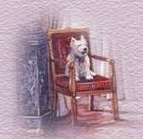|

Nearly every family of means was in the habit of giving a few dinners to its friends during the year. As a matter of course, the members of the family were, in return, invited to “dine out.”If you invited your friends to a dinner, you should not wish them to go away dissatisfied. It should not be forgotten that much depended upon the appearance of the table, and the manner of serving the courses. In fact, more success could be attained by studied attention to the room, the table, and the serving of the courses, than in the preparation of costly viands. This page will provide you with some typical Victorian recipees. I gathered these from very old library books and plan to change the recipees once a month for your enjoyment and cooking pleasures. Bon appetit! 
Imperial
A receipt for a very refreshing and wholesome beverage, if either heated from the weather or feverish from indisposition: Put into a jug that will contain three pints, half and ounce of cream of tartar, the juice of a lemon, and the rind, pared very thin; pour boiling water over these, and add sugar to taste. When cold, it is fit for use. "Our New Cook-Book," Peterson's Magazine, 1868

Baked Beets
Beets are far better baked than boiled, though it takes a longer time to cook properly. French cooks bake them slowly six hours in a covered dish, the bottom of which is lined with well-moistened rye straw; however, they may be baked on the oven grate, like potatoes. Wipe dry after washing, and bake slowly. They are very nice served with a sauce made with equal quantities of lemon juice and whipped cream, with a little salt.
Science in the Kitchen, 1892.

Cheese Straws
Roll piecrust dough the same thickness as for pies. Cut in strips from six to ten inches wide and cut the strips into straws or sticks a quarter of an inch in width. Lay upon baking sheets, leaving a space between the straws a third the width of the straws. Grate rich cheese, season to taste with salt and red pepper and scatter thickly over the straws and the spaces between them. Put in the oven where the greatest heat will be at the top and bake ten or fifteen minutes. Cut the cheese in the center of the spaces between the straws, remove from the baking sheet with a limber knife and pile tastily on a plate. Good Housekeeping Everyday Cook Book, 1903. Recipe by Emma P. Ewing
|